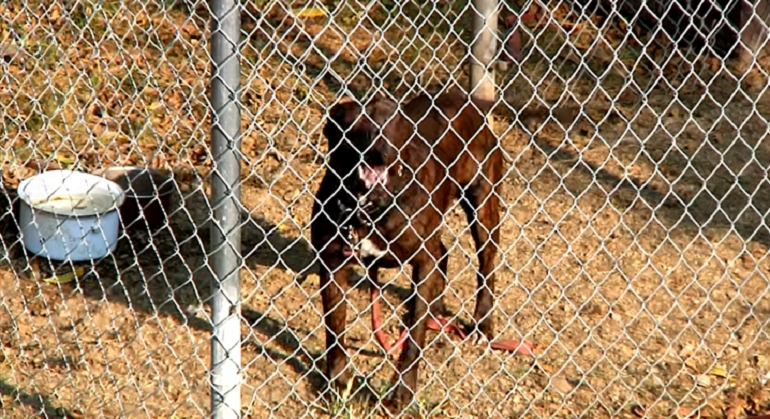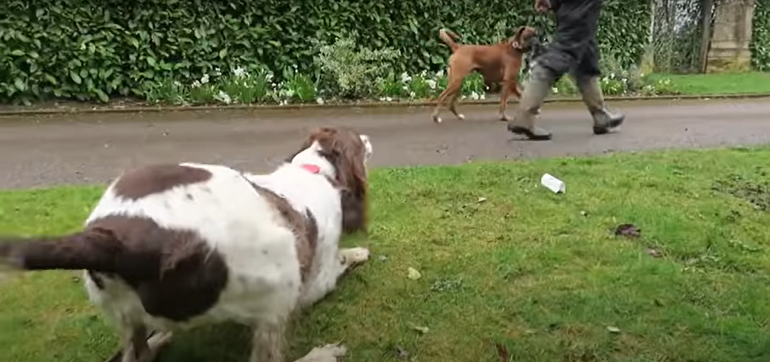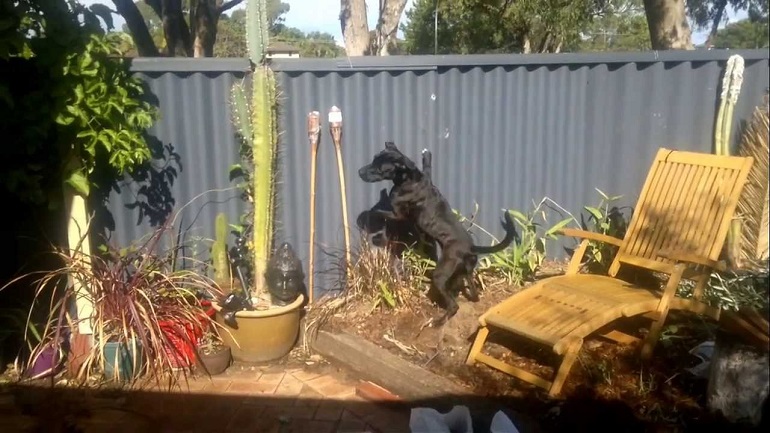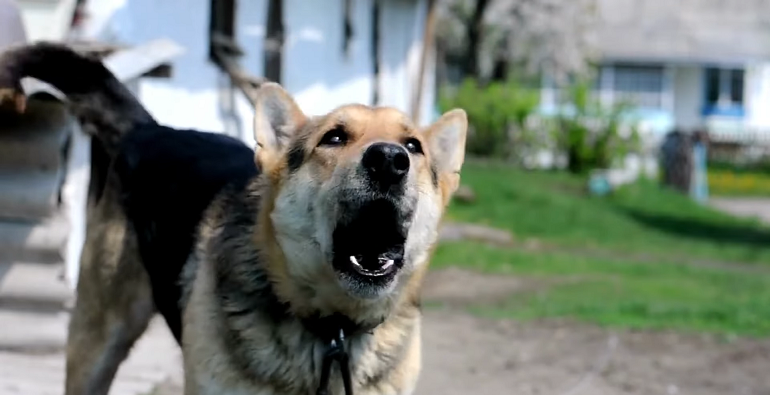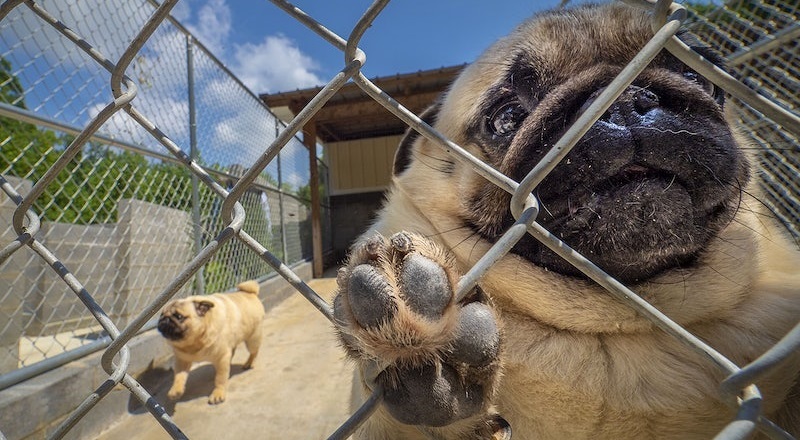Barking is a natural form of communication for dogs, but when it becomes excessive, particularly through a fence at other dogs, it can be disruptive and stressful for both pet owners and neighbors. Understanding the root cause of this behavior is crucial in addressing it effectively. “How to Stop Dog Barking at Other Dogs Through Fence – WAF” provides practical, compassionate strategies to manage and reduce your dog’s barking. By exploring the underlying motivations and employing positive reinforcement techniques, you can foster a more peaceful environment, strengthen the bond with your furry friend, and ensure a harmonious neighborhood experience.
My parents never allowed me to have a dog, and that’s why, I spent my entire childhood watching my friends, flaunting their dogs like trophies and pretending like the luckiest people for having a non-human best friend.
Thus, after aching for almost twenty years, the very first thing I did, after moving out of my parent’s house, was to get an adorable dog. I still remember the first day when I was on cloud nine to finally play a cute yard game with my new friend, but nothing went as I imagined.
I read somewhere that every dog loves to play the frisbee game, so I began with it, but instead of catching the frisbee and carrying it to me for a new throw, he started shouting at the dog next door. Long story short, I had to pull my dog back inside the house because I couldn’t be more embarrassed by my dog’s hostile behavior.
That day I realized why my parents thought I couldn’t handle a pet. But I didn’t give up. Instead, I researched for several days and extracted all the tips one may utilize to stop a dog from barking at a neighbor’s dog.
I spent the next few days trying these tips and found only a few of them actually helpful, which I’m going to pen down here. Check it out because I’m sure what’s worked out for me will definitely work out for many pet owners out there to correct their dog’s unwanted behavior.
Why Does My Dog Hate My Neighbor’s Dog and Bark at Him?
When your dog barks at the neighbor dog, it surely doesn’t mean that he is talking to him or saying Hello in a loud tone.
Dogs are super possessive and incredibly insecure about their owners, which makes them hate almost everyone peeking through the privacy fences, invading your territory – whether it’s your neighbor dog or neighbor himself. However, the reasons for your dog’s barking can be numerous.
For example, maybe these are your neighbor’s dogs who start barking first, and your dog just can’t let them win. Similarly, another reason behind his constant barking might be that he is taking other dogs as a threat to his owner. Usually, dogs bark to set the threat away from your boundary or to alert you.
Besides, sometimes it’s not that your dog barks at the other animals for hating them. Instead, the triggering factor behind this yelling could be fence aggression – aggression that builds up when he can’t interact with other dogs standing across the fence line.
Remember that dogs are super social, so when you leave them in your backyard alone or tied to a leash, they might begin to bark madly, out of boredom or frustration, or lack of mental stimulation.
Whatever the reason behind your dog’s behavior, don’t forget that the barrier of frustration is dangerous for both your and your neighbor’s dog. Whenever they’d get a chance to meet face to face, they’ll end up in a terrible fight, to conclude their countless fence wars.
Therefore, you should take quick action to train him properly to break this toxic habit otherwise, this nasty behavior will, soon, get out of control.
How Can You Stop Your Dog from Barking at Your Neighbor’s Dog
It’s a long journey, and you shouldn’t expect your dog to understand your language or basic commands in a day. However, if you are persistent enough, achieving your goal is not something impossible – all you need is a bit of patience and consistency.
Note that from consistency, we mean the consistency to train and recall training regularly. If you have successfully made him understand when to shut up or sit down calmly after hearing a word, you’d need to stay consistent with this command.
In other words, if you correct his behavior one time by giving him a command and ignore the same behavior the very next time, your dog will unlearn his lesson.
Besides, familiarize your dog with your neighbor’s pet by arranging off-fence meetings or encouraging them to play together.
Similarly, to introduce your dog to the neighbors, walk your dog around the neighborhood since it will make him understand that these people are not your enemies but friends.
Steps to Stop Dogs Barking at Fence Lines
Some other things you can do to prevent the fence fight are as follows:
Install a Vinyl Privacy Fence
According to the certified professional dog trainer, chain link fences don’t only look scary but may also be quite harsh on your dog’s nerves – making him more aggressive and grumpy.
Therefore, it’s better to opt for other dog fences options like vinyl fences or dog eared fences. These fences limit or block the view completely, keeping your pooch relaxed and less distracted by the barking dogs outside.
Another good thing about these privacy fences is that they are easier to upkeep and look fabulous around all sorts of properties.
Escape-proof Your Landscaping
In case your dog has considered your neighbor dog his die-hard enemy, you better make your landscaping escape-proof. Otherwise, your furious dog will climb across the fence, today or tomorrow, to spit out the anger boiling in him lately.
Many dog owners have found invisible fences quite helpful in keeping their dogs inside a boundary and suppressing their bitterness.
From the word electric or invisible, don’t think that such fences cost an arm and leg since they are not only much affordable but also super easy to install.
Besides, you should also go through expert advice on how to stop dogs from jumping the fence to ensure your pet’s containment.
Bring Your Dog out on Leash
If you can’t afford to install the dog fences around your property, the best possible solution here is to bring your dog out of the house on a leash so he won’t run to tear your neighbor’s dog apart.
Putting your dog on a leash is important until he gets familiar with the other dog and fathoms that his presence around you is not ominous.
Speak to Your Neighbor
If you’re on a budget and prefer not to buy fences & leashes or can’t take some time out of your tight schedule for your dog training, the only thing which might make your life easier is to speak to your neighbor.
Coordinate yard schedules with him so he won’t take his dog out in the yard when you are playing with your pooch there. Besides making yard schedules, you can also request him to let the dogs interact in the park or play together for a few minutes since doing so will mollify their aggressive behavior greatly.
Train Your Dog
It’s only the proper training with which you can induce good behavior in your dog. Yes, alternative hacks like installing tall fencing or putting a leash around your dog’s neck can limit his annoying behavior to some extent, but it’s not a permanent solution.
Many dogs require only two weeks of training to understand which of their habits are hard to bear.
It will take even less only if you stay consistent enough. To make your pet obey your verbal commands, reward him more frequently during the early days of training and keep feeding him yummy treats on and off to encourage obedience.
Give Your Dog More Playtime
Don’t overlook your dog’s needs, and remember that in addition to good food and a soft, cozy bed, he also needs a surplus amount of playtime. And from playtime, we don’t mean letting your dog roam around the yard, unattended.
You should play with him to dissolve the tension bubbles built in his mind, so he could be friendlier towards other animals. If possible, ask another familiar person to join you and your pet so your dog would have both a physical and mental workout.
Final Thoughts
Owning a dog means owning the responsibility for his every wrong conduct. So, if you don’t want to see your neighbor’s red faces every morning, invest your time, money, and energy in your dog and remember the rule of thumb, which states that if you can’t be a good dog owner, you can’t be a good neighbor either.
In conclusion, curbing a dog’s tendency to bark at other dogs through a fence requires a combination of training, environmental modifications, and patience. Understanding the root causes of the barking—whether territoriality, fear, or excitement—allows for more targeted approaches, such as positive reinforcement, distraction techniques, or gradual desensitization. Consistent training sessions paired with a supportive environment, such as visual barriers or supervised play, can significantly reduce this behavior. Engaging with professional trainers may also provide additional strategies tailored to individual dogs, ensuring more effective and lasting results. Ultimately, fostering a calm and quiet demeanor enhances the well-being of both the dog and its surroundings.

